A few months ago I bought a very weird tea, something that I’ve never tried before. It was from a small little shop in one of the shabbiest tea malls in Maliandao — the Beijing Tea Corporation mall. It’s a husband and wife team, renting basically a corner of a much bigger store that sells mostly teaware (especially those big wooden tables). I went in there because I was looking for dancongs, and they only sell dancongs (a doomed business in Beijing, pretty much). I tried two things, neither of which I particularly liked because they were too light for my taste, but then the husband showed me one tea, brewed it up…. and it was weird enough for the weird factor for me to have bought 150g of it. The other reason I bought it is because I think they really don’t get much business and I felt a little bad.
That’s usually a recipe for disaster — it’s usually those moments when you buy the worst tea in your inventory. I left this tea on my shelf, unopened, for the past three months. After the aged Wuyi two days ago though, I thought I should try this weird tea out.
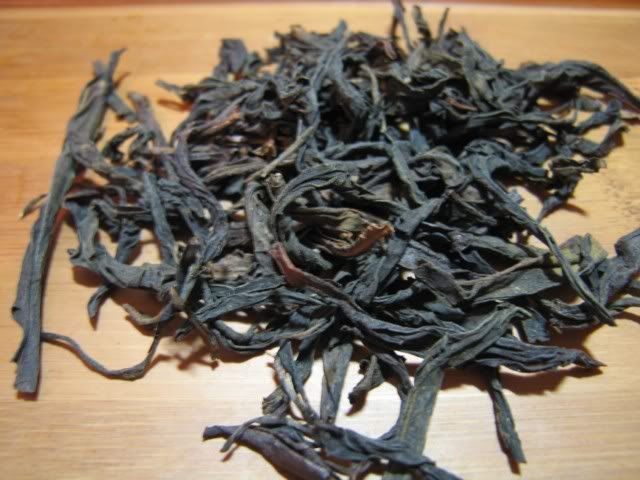
I say it is weird because it is a genre that I’ve never had before — aged dancong. I’ve seen aged Wuyis or aged tieguanyin, but never an aged dancong. I think mostly because dancongs tend to be lighter in flavour, and aging a lightly roasted tea is not a good idea — the flavours will deteriorate into nothing. When I tried it at the store though, an overwhelming sense of — get this — puerh hit me. It’s not quite puerh like, but smelling and tasting the tea, it definitely reminded me of some puerhs I’ve had.
The aroma is hard to describe. It’s… old. It smells most similar to the mixed, low grade old puerh from Best Tea House, but the old puerh has a musty old puerh smell that this dancong doesn’t. Instead, it just retains the clean, old smell. I don’t know what to call it….
I brewed it up… and the initial two infusions were rather bland. The tea is, shall we say, subtle, but not unpleasantly so. The colour is light:
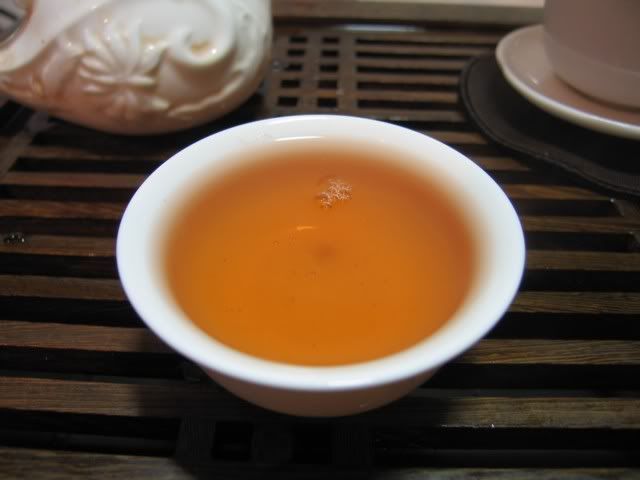
I increased infusion times, and it became stronger, with more of the “chen” taste that I found in the old Wuyi I had two days ago. However, it is not sour at all, which is a testament to good storage.
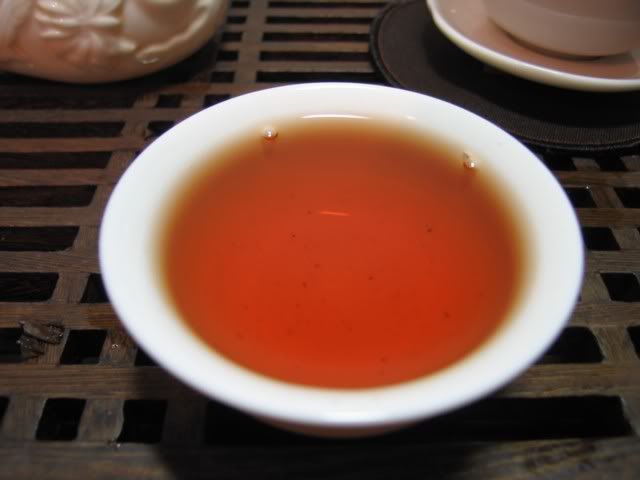
There were notes of dry dates again, the taste I found in the old cooked puerh brick. It’s a very subtle note, almost a flash. In fact, drinking this tea makes you work really hard trying to find the various flavours, but it’s quite complex and changes a lot between infusions. This time I only used about 4g of tea. Next time I will add more to make it more punchy and accentuate the flavours a little more.
The wet leaves are very large….
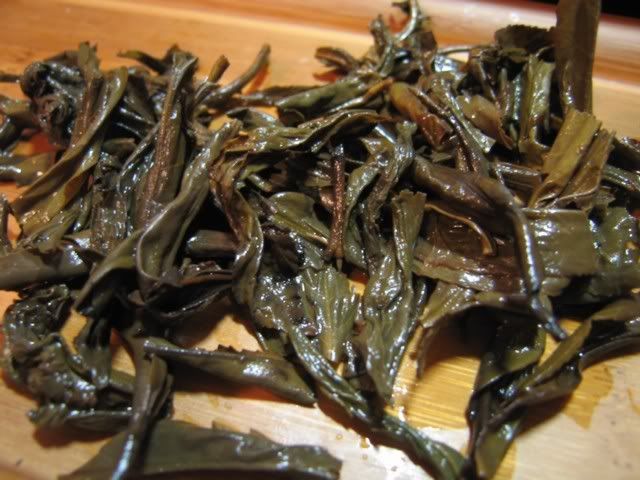
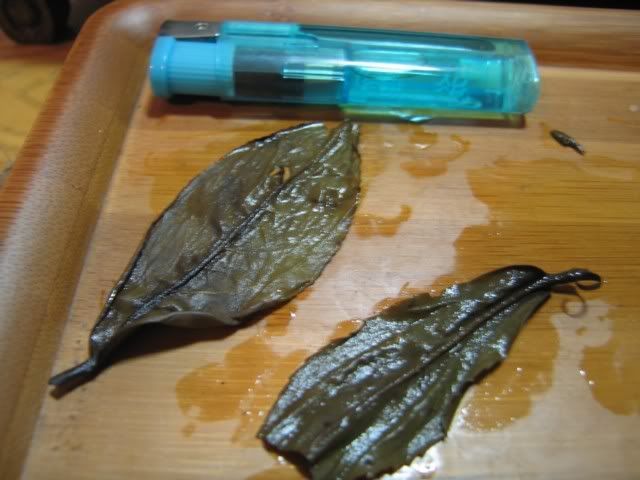
A pretty fun tea to drink, and it’s really quite cheap…..

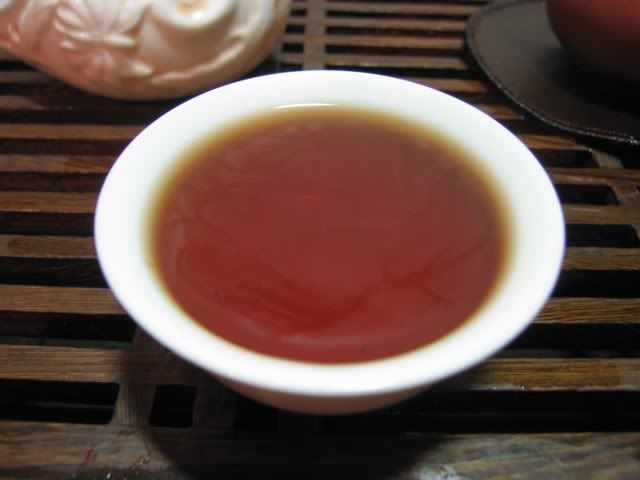
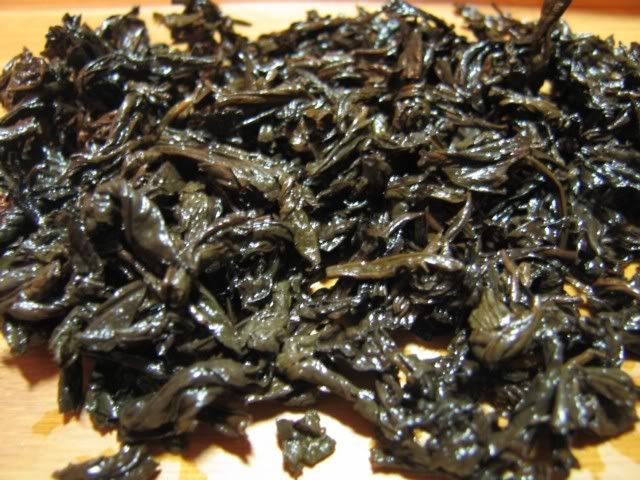











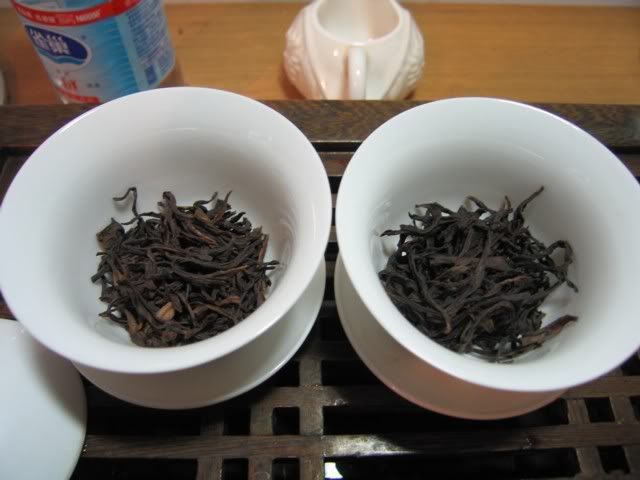
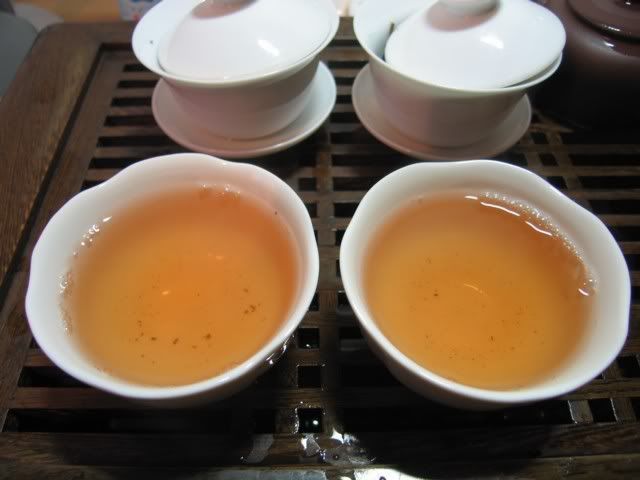
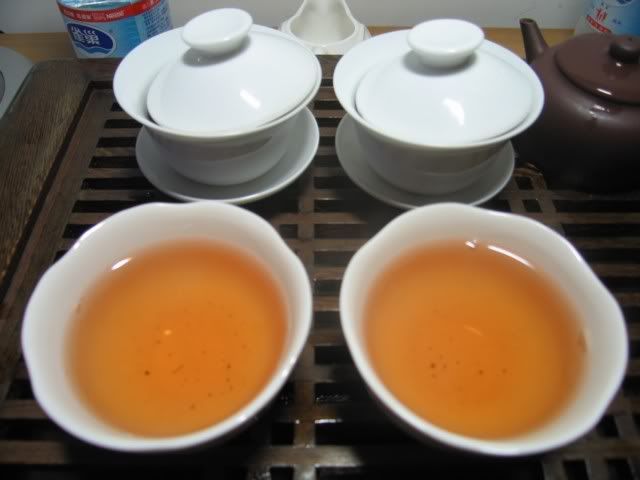
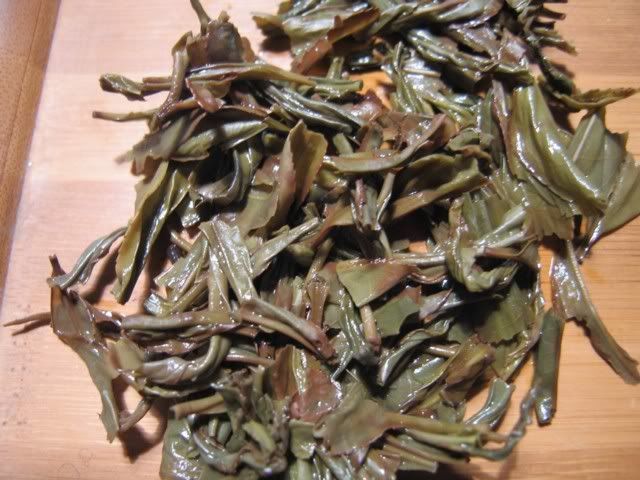
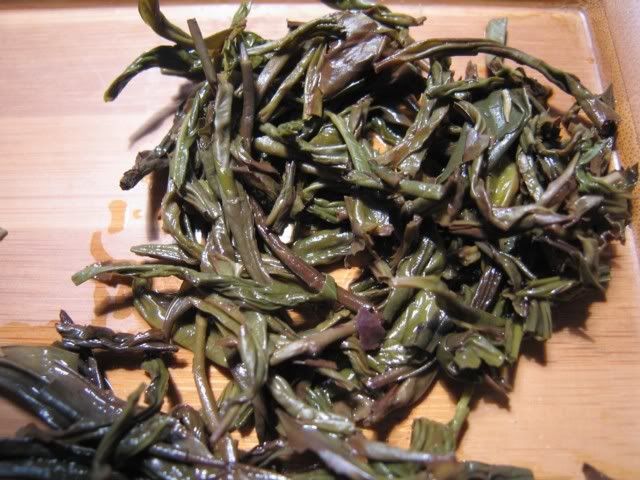
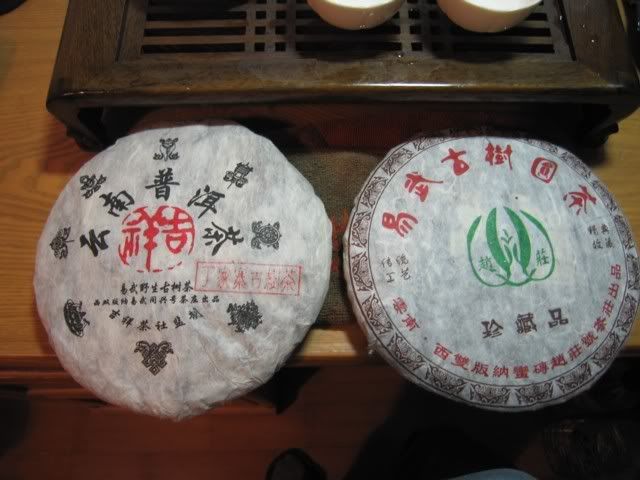


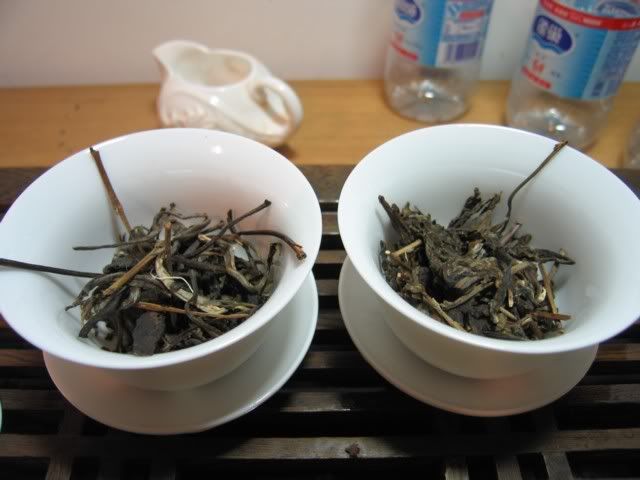
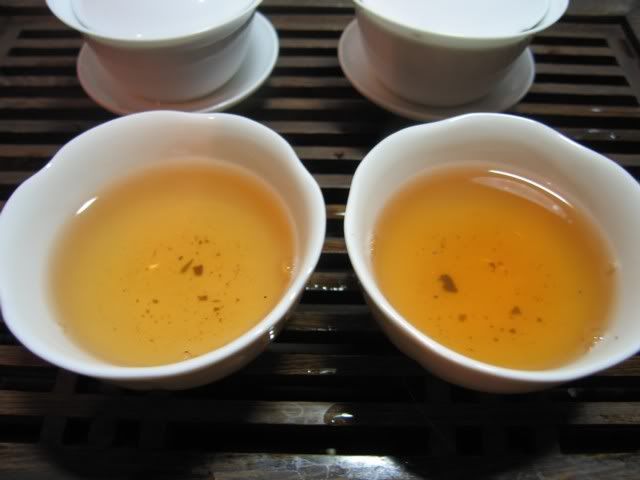
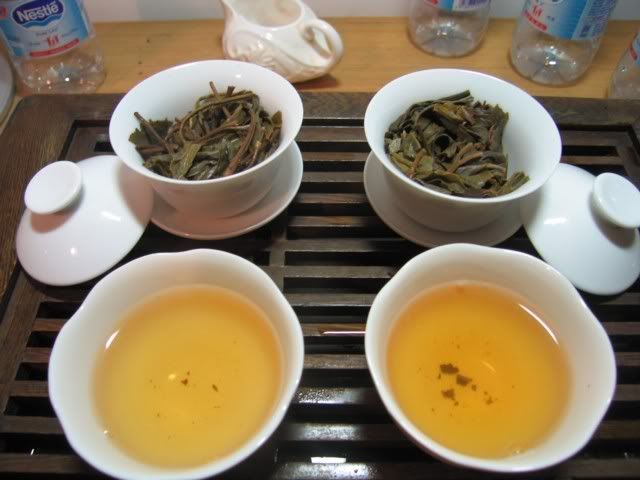

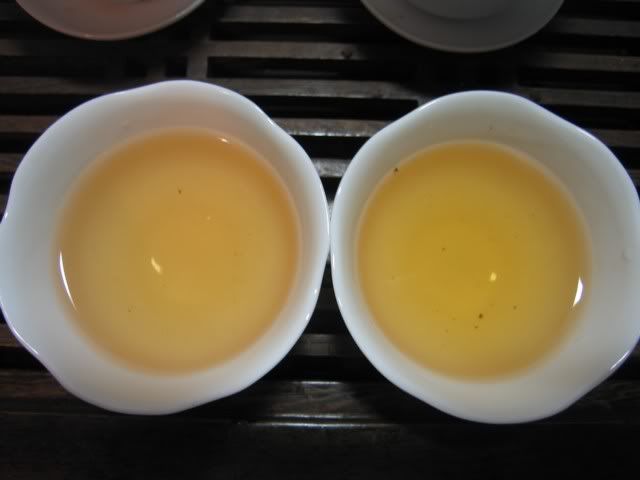
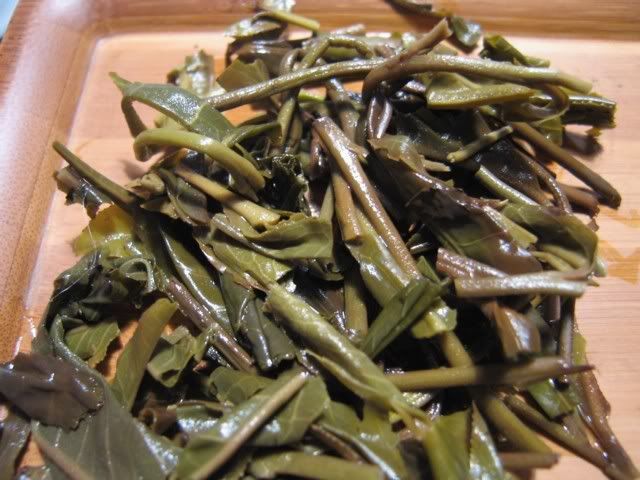
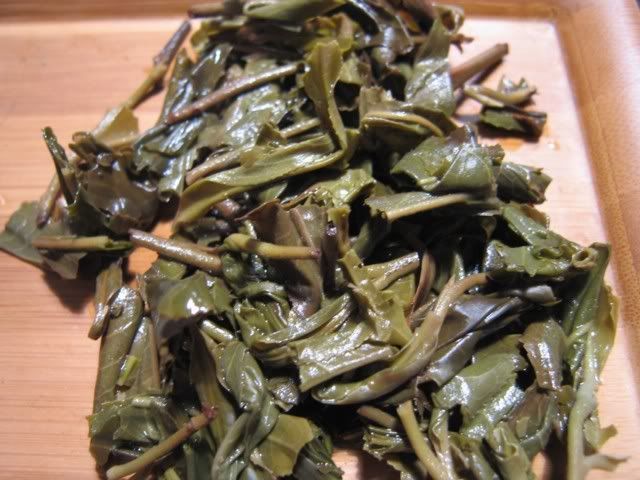
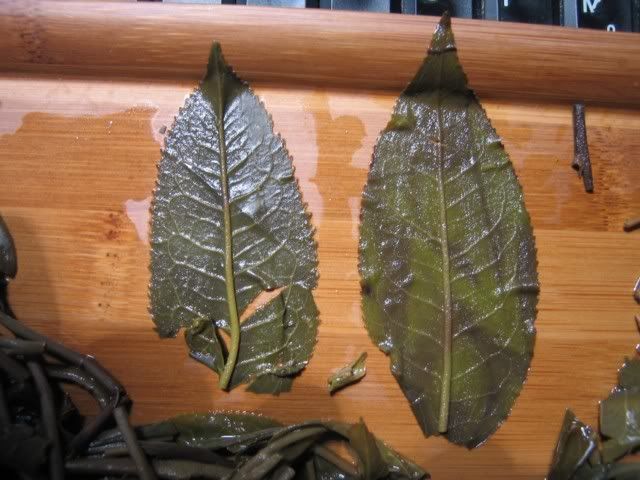

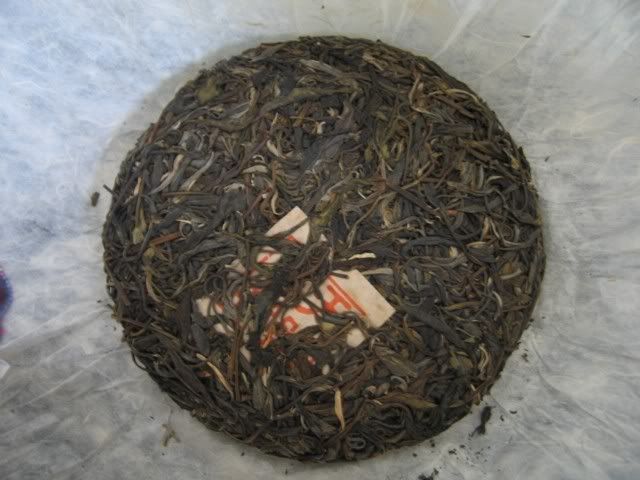
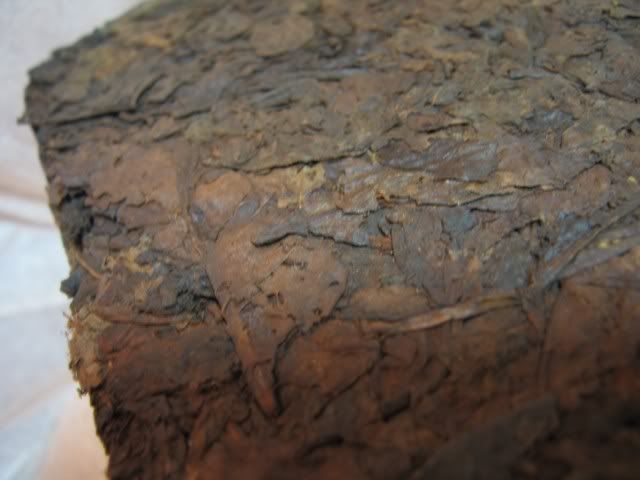
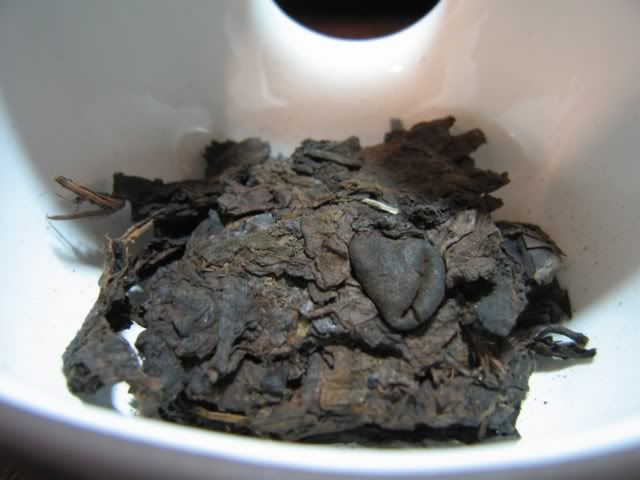
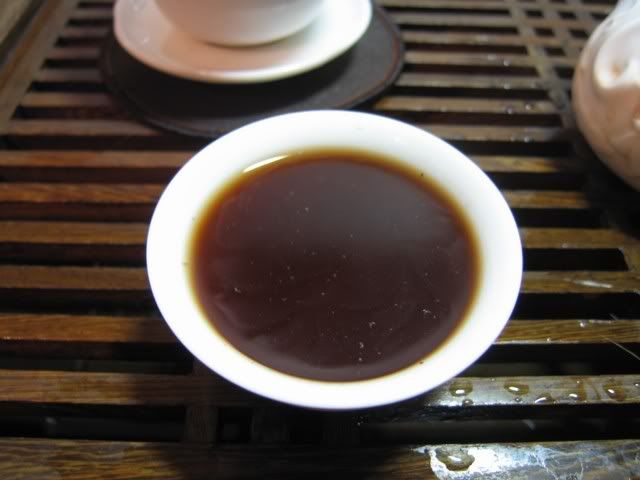
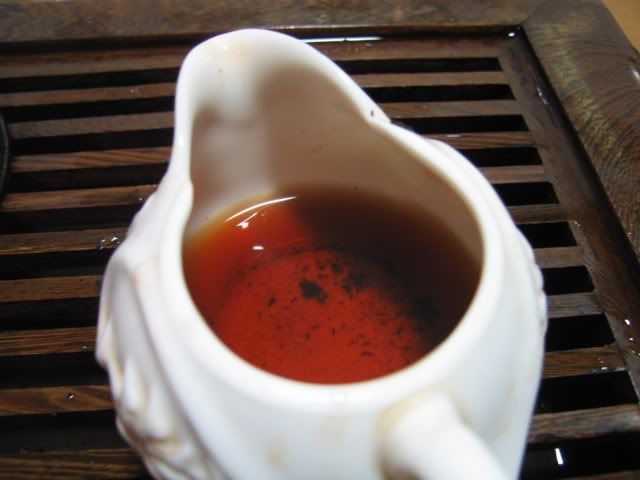
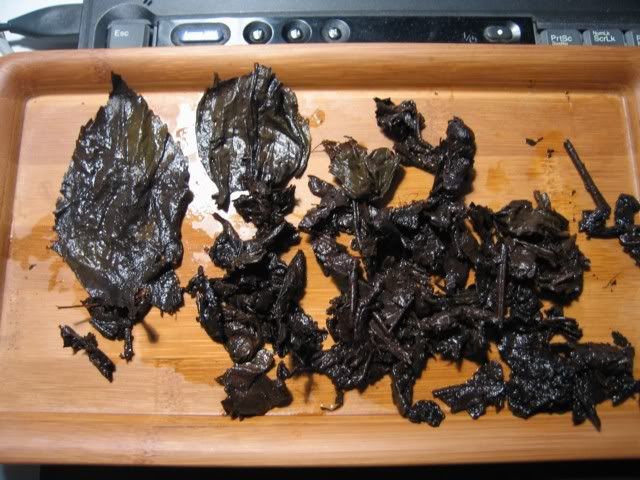
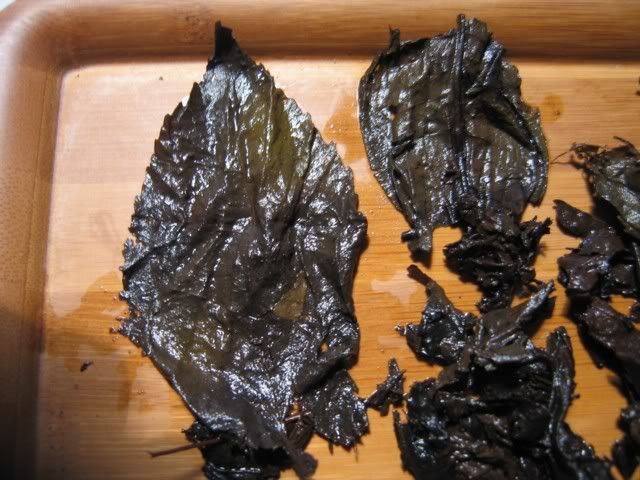
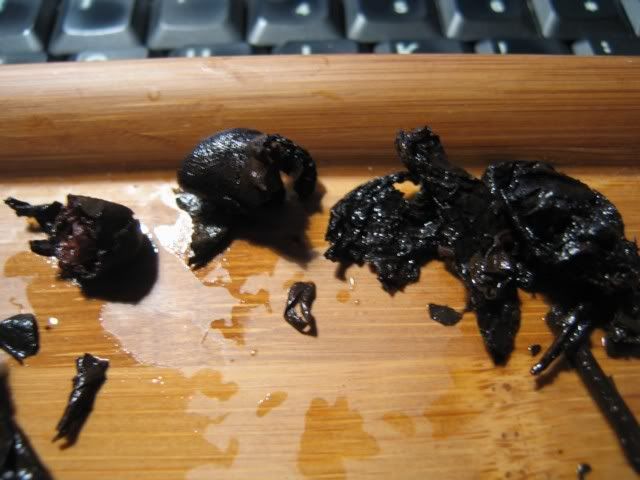
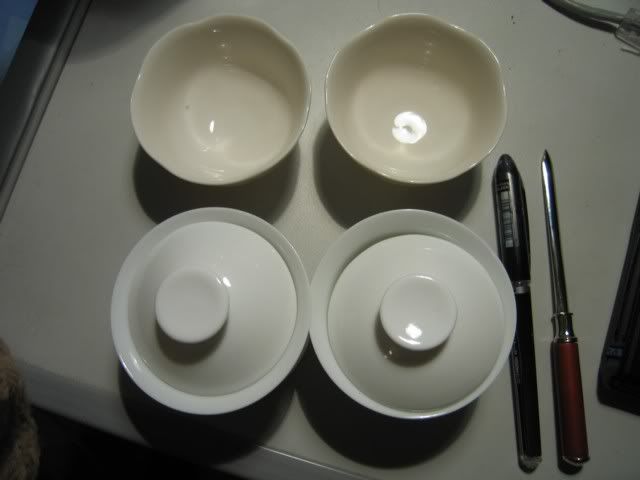
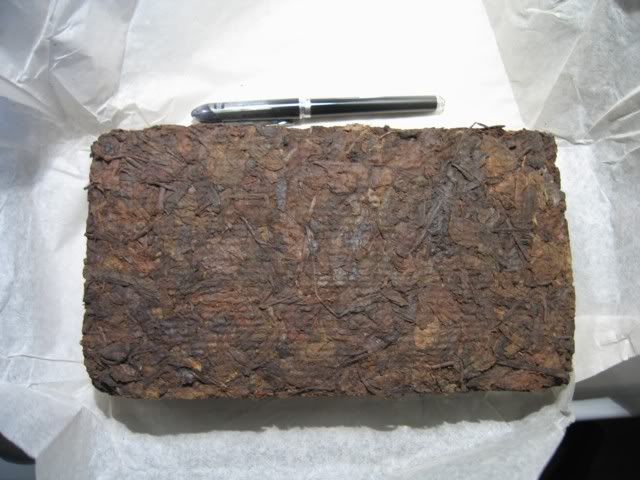
Interesting.... would 250C in my oven work?